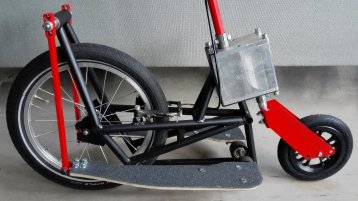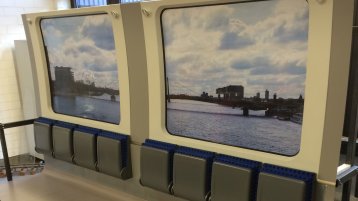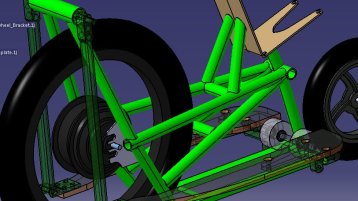"Mobility Interfaces"
In the research area "Mobility Interfaces", which has been under development since 2014, a consortium of several researchers (Prof. Michael Frantzen, Prof. Hatto Grosse, Prof. Volker Stölting, Prof. Tom Tiltmann, Prof. Klaus Groß, Prof. Inken Lind, Prof. Toni Viscido) at the TH Köln is working on finding and implementing new ideas to help shape the mobility of the future.
Interfaces between new and existing mobility concepts
This involves, for example, the intelligent linkage between new vehicle or mobility concepts and existing means of transport such as bus or rail. The resulting interfaces between local public transport or long-distance transport with individual micro-vehicles still show a high need for optimization, which is to be covered by research projects of Cologne Technical University.
The volume of traffic in Cologne continues to increase.
As a location for various universities, cultural, historical, industrial and commercial institutions, the volume of traffic in Cologne is increasing rapidly at all levels. Due to the urban and demographic structure, foot and bicycle traffic is also expanding, but also the interest and use of newer individual small and very small vehicles (Pedelecs, Segways, Hoverboards, electric vehicles, etc.) is constantly increasing, presenting new challenges for transport companies, other service providers and vehicle manufacturers. The parking situation, the crossings and connections, but also the "bridging of the last mile", between home or starting and end point of transport use, but also between transport systems, is of increasing, but still little considered importance. Furthermore, demographic change requires an adaptation of the infrastructure, especially in large cities.
New concepts of networked mobility are not yet given much attention and are often not even integrated into the future plans of cities or transport companies. Particularly in an ageing society, the demand for vehicles such as pedelecs or electric vehicles is growing, which is why the problem of safe anchoring in buses and trains will become more important in the future. In order to ensure equal rights for elderly and mobility-impaired persons, it is necessary to provide transport that is both unexceptional and safe, especially with regard to public transport.
The overall challenge therefore is to meet the demand for new mobility concepts in the form of small or very small vehicles and to develop them accordingly and to ensure that they can be taken along in public transport with innovative anchoring options.




